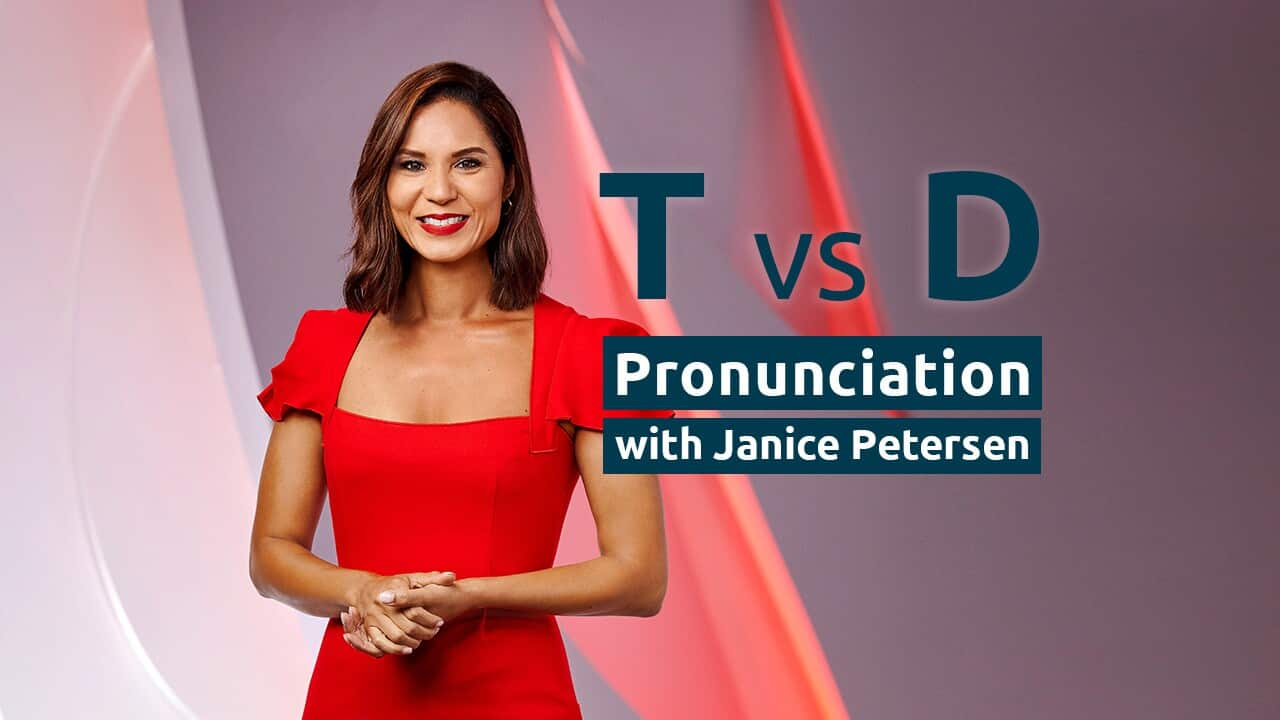Key Points
- Learning objectives: Can pronounce and feel the difference between /t/ and /d/ sounds
- L1 influence: t/ may be confused with /d/ for Vietnamese, Korean, and French speakers
- /t/ sound can be pronounced differently in American English
- Minimal pairs: /t/ town try too train tie /d/ down dry do drain die
Ol lesen ia oli blong evri Inglis level
Transcript:
(Note: This is not a word-for-word transcript)
Hi. I’m Janice Petersen from SBS World News and I’m here to help you improve your English pronunciation.
I’ll explain how to make sounds that can be tricky to distinguish and also give you some ways to practice them.
The sounds /t/ and /d/ can be difficult for many speakers of English because they sound so similar. But, don’t worry!
By the end of this podcast you will be able to pronounce these sounds easily.
Let’s start by finding out what the difference is between the /t/ in town and the /d/ in down.
Both these sounds are made by touching the tip of your tongue to the back of your top teeth.
The difference is in the amount of air you release.
When you make the /t/ sound you release more air than when you make the /d/ sound. This means that the /d/ sound is a bit quieter.
Okay, let’s practise with the /t/ sound. Try saying these words with me:
- town
- try
- too
Now, let’s do the same thing with the /d/ sound.
- down
- dry
- do
A good way to know if you’re doing this properly is by holding your hand in front of your mouth and feeling how much air you’re releasing.
Try holding your hand about 10cm away from your face and saying these words:
- town … down
- try … dry
- too … do
We can also practice these sounds by putting them together in a tongue twister:
A tidy Tasmanian tiger tied a tighter tie to tidy her tiny tail.
Tasmanian Tigers were animals that looked like small tigers because they had a striped lower back. Sadly, these animals are now extinct, which means there are none left alive.
OK. Let’s try that tongue twister. Take a listen to these learners have a go:
Students:
Hi! We are from Liverpool City Library Conversation Cafè and we want to have a go at your tongue twister!
A tidy Tasmanian tiger tied a tighter tie to tidy her tiny tail.
Janice:
That was awesome! Those always get harder the faster you say them.
You have probably noticed that speakers from different countries say some sounds differently.
The /t/ and /d/ sounds are pronounced the same way in Australian and British English. But, if you like watching American movies you might have noticed that sometimes the /t/ sound is more like a /d/ sound when it happens in the middle of a word.
I hope you’ve enjoyed learning about the different ways of saying the /t/ and /d/ sounds. Well done practising your pronunciation today!
CREDITS
Thanks to our educational consultant, Natalie Oostergo and the students from L






